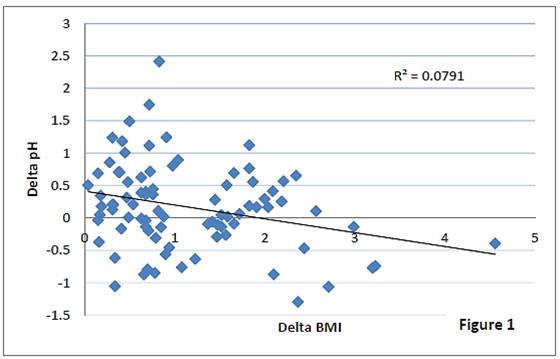|
Back to 2011 Program
The Impact of Body Mass Index Reduction on 24-Hour Urine Parameters
Michael M Maddox, Simone Thavaseelan, Gyan Pareek, George Haleblian
Brown University, Providence, RI
Introduction: Studies have shown an association between obesity and lithogenic metabolic parameters in stone-forming patients. However, the relationship between obesity and nephrolithiasis is incompletely understood. We assessed the effect of change in body mass index (BMI) on changes in 24-hour urine profiles.
Materials & Methods: 505 consecutive stone-formers completed comprehensive metabolic evaluations between 2006 and 2010. BMI (kg/m2) was measured at successive office visits, and 181 patients completed 24-hour urine collections separated by at least 3 months available for retrospective review. Delta-BMI was compared against 24-hour urine parameters and the correlation coefficients (R2) were calculated.
Results: 140 of the 181 patients (77%) were obese (BMI≥25). The mean delta BMI in our population was +0.09kg/cm2 (range -5.62 to +4.56) with a mean time between 24-hour urine collections of 8.9 months. Using a linear regression model, no significant correlation was found between delta-BMI and 24-hour urine parameters. In the subset of patients with a positive delta-BMI, there was a trend towards a decrease in urinary pH (R2=0.08, fig 1).
Conclusions: Few studies have investigated the effect of weight loss on metabolic profiles. Our data did not suggest a clear correlation of change in BMI with change in 24-hour urine chemistries. Although weight loss may play a role in the management of stone-forming patients, the approach to stone prevention remains multi-faceted. 
Back to 2011 Program
|